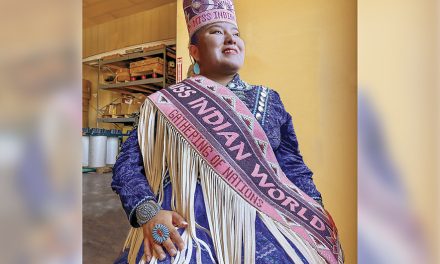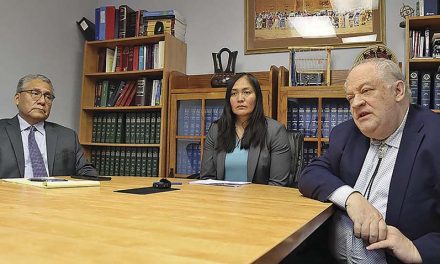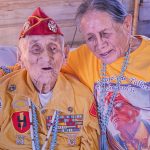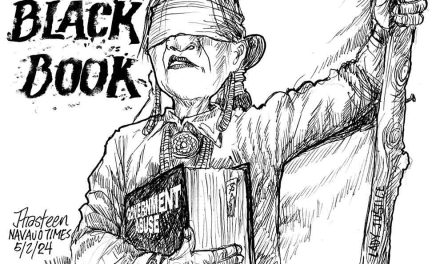
50 Years Ago: Nakai: Your votes for a new nursing home
In 1966 ago, when Raymond Nakai was running for re-election, he made Navajo voters a promise: Give me another four years and I will give you a nursing home on the Navajo Reservation.
Ten years before, a promise of a nursing home probably wouldn’t have been made because most people wouldn’t think one was needed. Traditionally the children and grandchildren would accept the responsibility of taking care of their elders. In fact, Navajo elders had a key role in teaching the grandchildren the ways of the Navajos.
But Nakai said things were changing. More Navajos were moving off the reservation to get jobs and leaving their grandparents. With no one available to take care of them, Nakai pushed for a nursing home on the reservation, saying that if one was not built he was afraid that Navajo elders would be forced to live in nursing homes off the reservation, far from the land they loved. So, with a sense of pride, Nakai this week 50 years agho had a rare meeting with the local press as well as Howard Graves, who came from the Associated Press, to announce that construction would begin in mid-1969 for a 79-bed nursing home in Chinle.
The Chinle Nursing Home, as it would be called, would be run by a private corporation, he said. Nakai said the nursing home will cost about $1.2 million, most of which was coming from a federal grant from the Arizona Department of Health. The Four Corners Commission was also chipping in for some of the cost. He said that while the nursing home was meant primarily for Navajos, it would also accept non-Navajos as long as they met the qualification of being long-time residents of the reservation. The one-story building would also include centers for physical and occupational therapy, a recreation and social hall, a cafeteria and two nursing stations. He said the nursing home would employ a staff of 60 people.
Today, the Navajoland Nursing Home, as it is now known, is being replaced by a modern two-story building. Residents are scheduled to be transferred to the new building next month. In its Nov. 28, 1968, issue, the Navajo Times pointed out that Nakai was having a really good year with a lot of his dreams coming true. Not only was the reservation getting a nursing home, but Nakai’s dream of having a community college on the reservation was also coming to fruition.
But Robert Roessel, one of the key people behind the creation of the college, said this dream was not a recent one. Nakai had been talking about a community college on the reservation some 25 years before when he was a foreman at the ordnance depot in Flagstaff. But probably his biggest achievement, said the Times, would be to finally get a constitution approved by the Navajo people. The new constitution would give the chairman or president, as he would be called in the future, more power, said the Times, and if it happened, Nakai would deserve all of the credit.
It turned out that the Times would be his biggest supporter in this endeavor because Dick Hardwick, the paper’s managing editor, realized that the approval of a constitution would for the first time provide the tribal newspaper with the freedom it had never had to print the truth about what was going on in the tribal government.
In 1967, Nakai removed Chet MacRorie as the editor, a man he despised and who he thought despised him and was working with those who were trying to get him out of office. Hardwick would never have the problem MacRorie did with Nakai, but he would admit in later years that he was not as aggressive an editor as MacRorie was. He was essentially on leave from his job at the BIA and because of that, he didn’t want to make waves so the paper during his years as editor stayed away from controversy.
But he felt strongly that once a constitution was approved which provided freedom of the press for the newspaper, the Times would be a lot better off and future editors would not have to worry about retaliation from either the chairman or members of the Council. In other news this week in 1968, the dispute over attorney Ted Mitchell’s removal from the reservation by the Navajo Tribal Council was back in the spotlight. Federal Court Judge Walter Craig in Phoenix heard a two-hour hearing on a lawsuit filed by Mitchell against the tribe in his efforts to be allowed to come back on the reservation.
He had been running DNA-People’s Legal Services for the previous two months from a trailer in Tse Bonito, New Mexico. The tribe was represented at the hearing by Harold Mott, the tribe’s general counsel. Annie Wauneka, the Council delegate from Klagetoh and Wide Ruins who started the movement against Mitchell, attended the hearing but did not speak. This marked the first time Mitchell and Wauneka were in the same room since the Council banned him from the reservation and, according to reports, the two just glared at each other.
The issue, according to an article in the Arizona Republic, wasn’t whether Mitchell should be allowed back on the reservation but whether the Council followed due process in having him removed. It all centered on provisions in the recently passed Indian Civil Rights Act, which required tribal governments to have a process in place to protect the civil rights of those who come in contact with them. The act was meant to keep tribal governments from usurping the rights of their tribal members, but Mitchell, who was white, was the first person to file a lawsuit using the act as the basis of his argument.
At the end of the two hours, Craig told both sides that they had done a good job in presenting their positions and it would not be an easy decision. For that reason, he said he was going to delay the decision so he could do some research on the issue. He said he would render his decision on Dec. 20.
And finally, the Navajo Times reported the death of Howard Wilson, one of the best-known Indian traders on the reservation. He died on Nov. 21. Wilson was born in Iowa in 1905 but grew up in Gallup. By the time of his death, he had operated trading posts in Rough Rock, Round Rock and Chinle, Arizona, and Tohlakai and Fort Wingate, new Mexico.
He was an old-fashioned trader, giving credit and helping out with community events. He was very fluent in Navajo and he was called upon numerous times to act as translator at government meetings. In his later years he was also active in McKinley County politics and served as the county sheriff for four years.
To read the full article, pick up your copy of the Navajo Times at your nearest newsstand Thursday mornings!
Are you a digital subscriber? Read the most recent three weeks of stories by logging in to your online account.








 Highway 264,
Highway 264, I-40, WB @ Winslow
I-40, WB @ Winslow